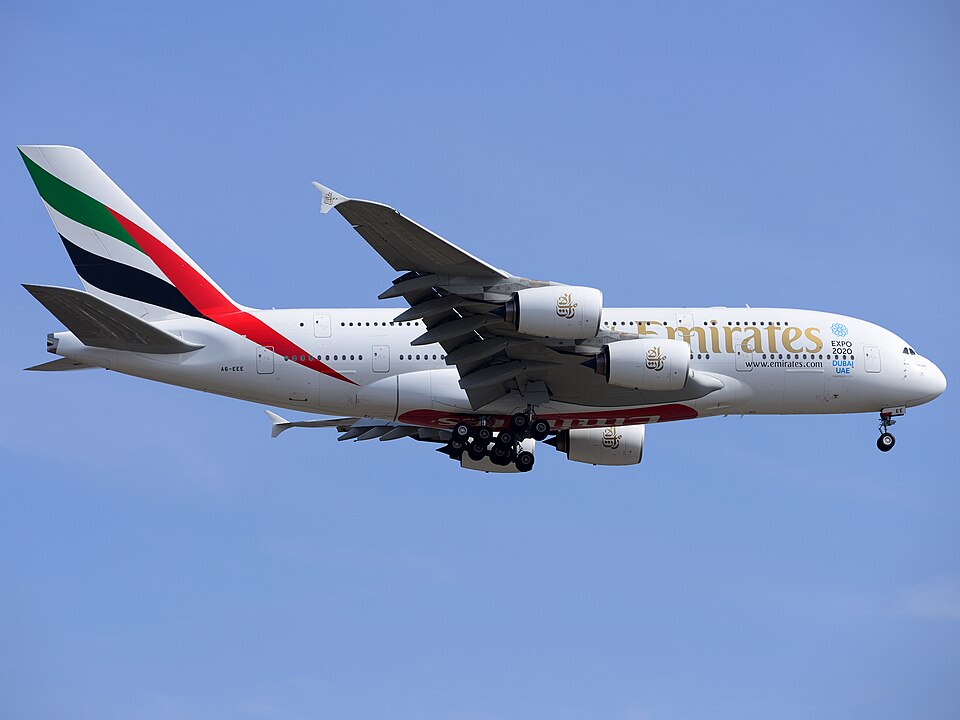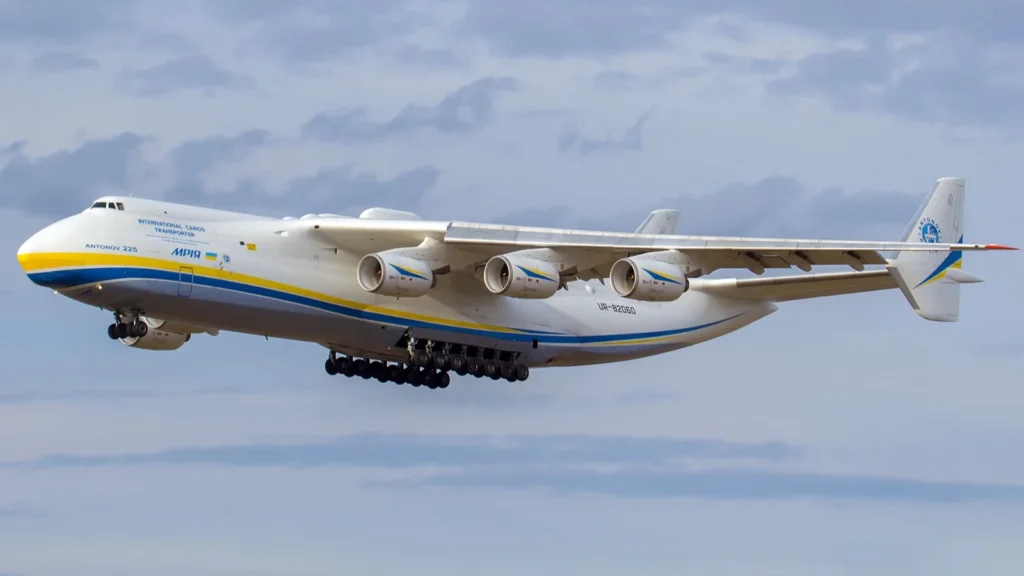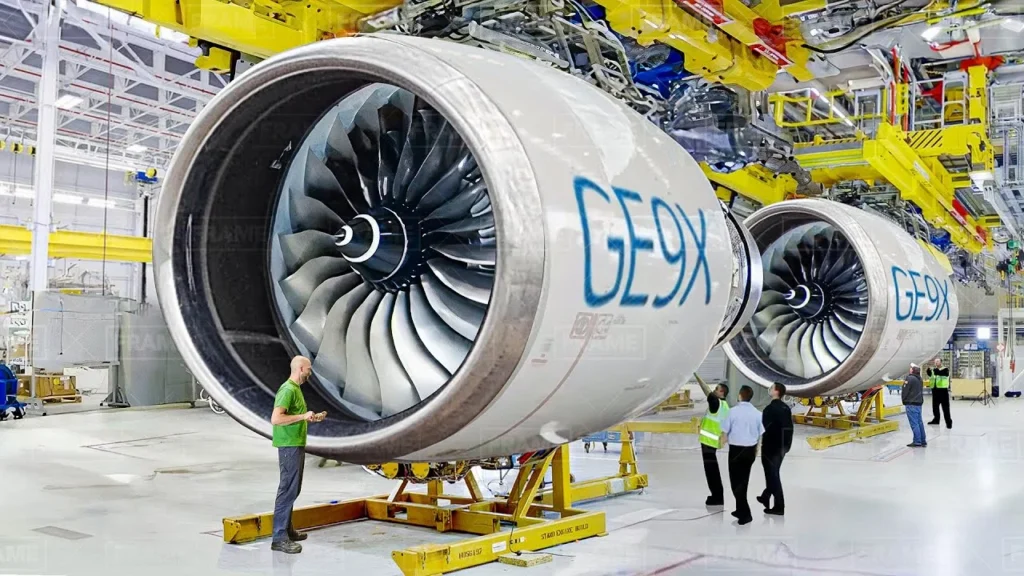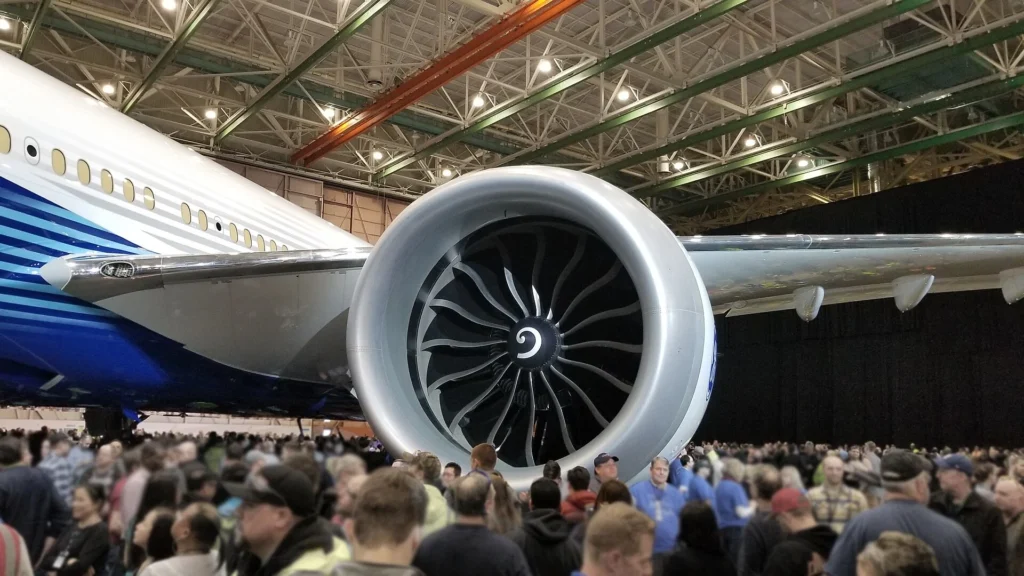The Boeing 777X has emerged as Boeing’s latest attempt to dominate the skies with sheer scale, while the legendary Airbus A380 sits as a cautionary tale of when bigger isn’t necessarily better.
Simple Flying explains that one aircraft is a double-decker behemoth that promised to revolutionise air travel but ended up grounded by economics, while the other is a stretched twin-aisle giant hoping to avoid the same fate.

Boeing 777X: A Replacement for A380?
Length
The Boeing 777-9 stretches an impressive 251 feet 9 inches (76.73 meters) from nose to tail, officially making it the longest airliner ever to roll off a production line.
This achievement nudges it just ahead of Boeing’s own 747-8, which measures 250 feet 2 inches (76.25 meters), claiming the crown that many thought would remain with the jumbo jet forever.
In contrast, the Airbus A380 measures 238 feet 8 inches (72.73 meters) in length—a full 13 feet 1 inch shorter than the 777-9, or roughly four meters for those keeping metric score.
This length deficit might seem surprising given the A380’s reputation as aviation’s largest passenger aircraft, but it reveals important insights about aircraft design philosophy and market positioning.

Why the A380 Came Up Short
The A380’s relatively modest length compared to other aircraft in its class stems from Airbus’s original design strategy.
The aircraft was optimised as part of a larger family concept, with the baseline A380-800 intended to be followed by an even longer A380-900 variant.
The -900 would have offered superior per-seat economics through its extended fuselage, making the entire program more commercially viable. However, Airbus essentially launched the equivalent of offering only the Airbus A319 when introducing the A320 family, or Boeing debuting the 747 program with just the shortened 747SP variant.
This strategic misstep contributed significantly to the A380’s commercial struggles. Other aircraft have surpassed the A380 in length, including the Boeing 777-300ER at 242 feet 4 inches (73.9 meters), Airbus’s own A350-1000, and the discontinued A340-600, which stretched to 247 feet 5 inches (75.4 meters).
The A380’s length disadvantage became a symbol of missed opportunities and design compromises that ultimately doomed the program.

Wingspan and Weight
While the Boeing 777-9 may win the length contest, the Airbus A380 reasserts its dominance in virtually every other measurement that matters. The 777-9’s wingspan of 235 feet 5 inches (71.75 meters) surpasses any Boeing 747 variant—the 747-8 spans 224 feet 5 inches (68.4 meters)—making it the widest single-deck passenger aircraft ever produced.
However, this achievement pales compared to the A380’s massive 261 feet 8 inches (79.75 meters) wingspan, which remains unmatched among passenger aircraft and trails only behind legendary aircraft like the Antonov AN-225, Hughes H-4 Hercules, and Stratolaunch.
Weight Champion
The weight difference between these titans tells an even more dramatic story. The Boeing 777-9 carries a Maximum Takeoff Weight (MTOW) of 351 tons, while its freight variant, the 777-8F, is projected to handle up to 365 tons.
These figures seem impressive until compared to the A380’s staggering 575-ton MTOW capability—nearly 65% heavier than the 777X. Even Boeing’s own 747-8 outweighs the 777X significantly, with certification for 447 tons.
The height disparity further emphasises the A380’s commanding physical presence. While the Boeing 777X stands 64 feet 1 inch (19.53 meters) tall—an increase from the previous 777’s height of 60 feet 8 inches (18.5 meters)—it remains dwarfed by the A380’s double-deck configuration that towers over airport terminals worldwide.

Technological Evolution
Despite maintaining the same MTOW as previous 777 generations, the 777X incorporates substantial technological improvements, including a completely redesigned wing, new vertical stabiliser, advanced engines, and modernised interior systems.
These changes represent one of aviation’s most comprehensive aircraft refreshes, comparable to the evolutionary leap from the Airbus A300 to the A330.
Strategic Design Decisions
The Boeing 777-300ER stands as perhaps the most successful wide-body aircraft of the modern era, with over 800 units sold and a track record of rendering four-engine competitors obsolete.
Its efficiency and range capabilities effectively killed off thirsty quadjets like the Airbus A340-600, which proved too heavy and fuel-inefficient for its passenger capacity.
The A350 Threat and Boeing’s Response
However, Airbus’s introduction of the clean-sheet A350 XWB family posed an existential threat to Boeing’s wide-body dominance.
The A350’s carbon-composite construction, latest-generation engines, and superior fuel efficiency directly challenged the 777’s market position.
Meanwhile, smaller 777 variants were already losing ground to the proven Airbus A330-300, creating pressure across Boeing’s entire wide-body lineup.
Boeing’s response targeted the 777’s primary weakness: its undersized wing relative to the aircraft’s weight and capacity.
The 777X features a substantially enlarged wing designed to dramatically improve fuel efficiency while supporting a stretched fuselage that reduces per-seat operating costs.
This approach allows Boeing to avoid direct head-to-head competition with Airbus, instead creating a unique market segment above the A350-1000’s capacity.
Market Positioning Strategy
The strategy appears to be working among premium carriers. Airlines like British Airways (BA), Cathay Pacific (CX), and Qatar Airways (QR) plan to use their 777X aircraft for routes requiring first-class cabins, while deploying smaller A350s for business-class-only configurations.
This market segmentation allows both aircraft types to coexist in the same fleet while serving different route requirements and passenger demographics.

Market Challenges and Opportunities
The 777X’s substantial dimensions create both opportunities and challenges that mirror the A380’s commercial experience.
The aircraft’s increased floor space compared to the A350-1000 enables airlines to offer premium cabin configurations that generate higher per-passenger revenues. British Airways (BA) exemplifies this strategy, planning first-class service on 777X routes while limiting A350-1000s to business-class configurations.
Customer Concentration
However, the 777X’s size also presents concerning parallels to the A380’s market concentration. Of the 777X’s 500-plus orders, Emirates (EK) accounts for 205 aircraft—nearly 41% of total commitments.
This customer concentration echoes the A380’s dependence on a small number of launch customers, particularly Middle Eastern carriers operating from hot, high-altitude airports requiring exceptional performance capabilities.

Weight Penalty Problem
The 777X’s design heavily incorporated input from Gulf carriers requiring ultra-long-haul capability from challenging airports. While this specialisation serves specific market needs, it also makes the aircraft extraordinarily heavy compared to competitors.
The engineering solutions needed to achieve these performance requirements—including the massive wing and reinforced fuselage—add weight that must be offset through increased passenger capacity to maintain competitive economics.
This size-versus-efficiency balance creates a fundamental challenge: larger aircraft require higher load factors to achieve profitability, making them riskier operational bets for airlines. When two aircraft offer similar per-seat costs, airlines typically choose the smaller option because it’s easier to fill and offers more scheduling flexibility.
Technological Innovations

Next-Generation Engine Technology
The 777X incorporates groundbreaking technologies that extend far beyond its impressive dimensions. The General Electric GE9X engine represents the pinnacle of commercial aviation propulsion, featuring a larger diameter than the GE90 while producing more power at lower stress levels.
Advanced materials throughout the engine’s construction enable higher pressure ratios and operating temperatures, delivering significant fuel burn improvements over previous generations.
Revolutionary Cabin Experience
The aircraft’s cabin represents a complete reimagining of passenger comfort. Boeing has incorporated 787-derived technologies, including advanced LED lighting systems, larger windows with electronic dimming capabilities, and reduced cabin altitude pressure equivalent to 6,000 feet—matching the 787’s comfort standards.
The fuselage sidewalls have been resculpted to provide additional cabin width, improving aisle space and passenger movement, even if individual seat width remains unchanged.
Modernised Flight Deck
Cockpit modernisation brings 787-style displays and systems integration, building on the existing common type rating between the two aircraft families.
These improvements could enable further training cost reductions for airlines operating both types while making the 777X more intuitive for flight crews transitioning from other Boeing aircraft.
The flight management systems incorporate advanced software designed to optimise fuel efficiency and reduce pilot workload. These systems work in conjunction with the new wing design to maximise the aircraft’s operational efficiency across various flight phases and route requirements.

Reality Check
Customer Overlap Analysis
Customer analysis reveals interesting patterns in 777X adoption. Most 777X customers also operate A350 variants, suggesting these airlines view the Boeing aircraft as complementary rather than competitive to Airbus offerings.
Air India (AI), British Airways (BA), Cathay Pacific (CX), China Airlines (CI), Emirates (EK), Ethiopian Airlines (ET), Etihad Airways (EY), Korean Air (KE), Lufthansa (LH), Qatar Airways (QR), and Singapore Airlines (SQ) all operate or have ordered both aircraft types.
This market overlap indicates that airlines see distinct roles for each aircraft rather than viewing them as direct competitors.
The 777X appears positioned for routes requiring maximum passenger capacity and ultra-long-range capability, while A350s handle the broader long-haul market with superior fuel efficiency and operational flexibility.

Development Delays and Market Impact
However, the 777X program faces significant execution challenges. Originally scheduled for 2020 delivery, the aircraft is now 6 years behind schedule, allowing the A350 to further establish market dominance.
Each delay provides competitors additional time to secure orders and allows airlines to defer capacity decisions that might otherwise favour the Boeing aircraft.
The program’s commercial success ultimately depends on delivering operating economics sufficiently superior to the A350 to justify the 777X’s size premium.
Airlines need compelling financial reasons to choose a larger, harder-to-fill aircraft over proven alternatives that offer greater operational flexibility.

Bottom Line
The Boeing 777X represents aviation’s latest attempt to prove that bigger can indeed be better—but only if the economics work.
Unlike the A380, which suffered from fundamental design compromises and limited market appeal, the 777X addresses a real market need for high-capacity, ultra-long-range aircraft.
Its success, however, depends on Boeing’s ability to deliver the promised efficiency improvements while avoiding the operational complexity that doomed its double-decker predecessor.
Airlines prioritise operational flexibility, fuel efficiency, and route economics over passenger capacity. While the 777X has secured more orders than the A380 ever achieved, its concentrated customer base and extended development timeline create risks reminiscent of Airbus’s superjumbo experience.
In an industry where even small efficiency advantages can determine aircraft success or failure, the 777X’s fate hangs in the balance between ambition and market reality!
Feature Image by Clément Alloing | Flickr
Stay tuned with us. Further, follow us on social media for the latest updates.
Join us on Telegram Group for the Latest Aviation Updates. Subsequently, follow us on Google News

